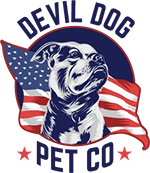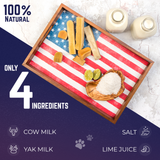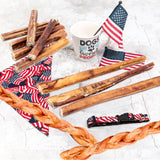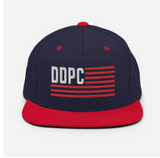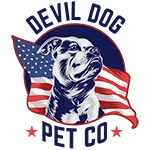Key Takeaways
- The nickname "hot dog" or "wiener dog" for Dachshunds comes from centuries of purposeful breeding, not just their appearance.
- Dachshunds have a distinctive long-bodied silhouette that sets them apart from other breeds.
- Many Dachshund owners face challenges such as stubborn behavior, back problems, and other quirks due to a lack of understanding about the breed.
- The author’s background as a Marine Corps veteran highlights the importance of discipline and knowledge in managing Dachshund behavior and health.
Table of Contents
- What Are "Hot Dog Breeds"? Defining the Term and Unpacking the Dachshund's Legacy
- The History and Origin of Dachshunds – From Badger Hunters to Household Names
- Anatomy of a Hot Dog Breed – Physical Features, Size, and Coat Types
- Temperament and Personality – How "Hot Dog Breeds" Think and Act
- Temperament and Personality – How "Hot Dog Breeds" Think and Act in Real Life
- Health and Lifespan – Safeguarding the Long Spine and Loyal Heart
- Choosing the Right Hot Dog Breed – Size, Coat, and Temperament for Your Home
- Training and Socialization – Building Extreme Leadership with Dachshunds
- Behavioral Challenges – Stubbornness, Digging, Barking, and Chewing: Tactical Fixes
- Common Health Issues in Hot Dog Breeds and How to Prevent Them
- Cultural Impact and Dachshund Fame – Stories, Achievements, and Media Spotlight
- Devil Dog's Commitment to Extreme Leadership – Empowering Hot Dog Breed Owners
Hot Dog Breeds Demystified: Unleashing the Truth About Dachshunds and Their Long-Bodied Counterparts
Every dog owner knows that moment when someone calls your Dachshund a "hot dog" or "wiener dog", but these hot dog breeds earned their nickname through centuries of purposeful breeding, not just their sausage-like silhouette. As a Marine Corps veteran who's seen discipline transform chaos into order, I've watched countless Dachshund owners struggle with their dog's stubborn streak, back problems, and behavioral quirks simply because they didn't understand what they signed up for.
This isn't another fluffy breed guide filled with cute photos and surface-level advice. We're diving deep into the anatomy, temperament, and real-world ownership challenges of Dachshunds, the original "hot dog breed", plus their long-bodied cousins. Whether you're considering adoption, dealing with behavioral issues, or want to maximize your dog's health and happiness, this guide delivers the unfiltered truth veteran dog owners need. Shop all products designed specifically for the unique needs of hot dog breeds to support their health and happiness from day one.
Dachshund owners often benefit from specialized chews, harnesses, and enrichment toys that cater to their breed's physical and mental requirements. Investing in the right products can make a significant difference in managing stubborn behavior and preventing common health issues.
What Are "Hot Dog Breeds"? Defining the Term and Unpacking the Dachshund's Legacy
Hot dog breeds refers primarily to Dachshunds and other elongated, low-riding dogs whose body proportions mirror the classic American frankfurter. The term "wiener dog" emerged in the early 1900s when German immigrants brought their "Dachshunds" (literally "badger dogs") to America, where the resemblance to German sausages became impossible to ignore.
The connection runs deeper than appearance. Both the Dachshund and the frankfurter sausage originated in Germany, and American cartoonist Tad Dorgan allegedly coined "hot dog" after struggling to spell "Dachshund" in a 1901 comic strip. The breed's unique build, elongated spine, short legs, and muscular chest, was engineered for underground badger hunting, not aesthetic appeal.
Key Fact: Dachshunds served as the 1972 Munich Olympics mascot "Waldi," cementing their status as Germany's most recognizable breed export.
The History and Origin of Dachshunds – From Badger Hunters to Household Names

German hunters in the 15th century needed a fearless, compact dog capable of pursuing badgers into their underground lairs. They selectively bred for elongated bodies that could navigate tight tunnels, powerful front paws for digging, and the tenacity to face a cornered badger weighing twice their size. This wasn't about creating a lap dog, these were working warriors.
The breed split into three sizes based on prey: Standard Dachshunds tackled badgers, Miniatures hunted rabbits, and the unofficial "Kaninchen" (rabbit) variety pursued the smallest quarry. World War I nearly destroyed American Dachshund populations due to anti-German sentiment, but the breed's charm and hunting prowess secured its comeback by the 1950s.
Modern Dachshunds retain every ounce of their hunting drive. That "stubbornness" owners complain about? It's centuries of breeding for independent decision-making in life-or-death underground encounters. Understanding this history explains why your Dachshund digs up your garden and ignores your recall commands, they're hardwired for autonomous action. For more on why dogs behave the way they do, read why does my dog do that for deeper behavioral insights.
Anatomy of a Hot Dog Breed – Physical Features, Size, and Coat Types
A Dachshund's elongated spine contains the same number of vertebrae as other dogs, the individual bones are simply stretched longer. This creates their signature silhouette but also their greatest vulnerability: intervertebral disc disease (IVDD). Their large front paws, loose skin, and flexible ribcage allowed them to dig and maneuver underground, while their deep chest housed powerful lungs for sustained work.
Size classifications determine more than appearance. Standard Dachshunds (16-32 pounds) pack serious muscle and attitude, while Miniatures (11 pounds or under) retain the hunting drive in a more manageable package. "Tweenies" fall between these weights and aren't recognized by the AKC, though they make excellent family dogs.
| Coat Type | Grooming Needs | Temperament Traits | Best For |
|---|---|---|---|
| Smooth | Weekly brushing | Bold, outgoing | Active families |
| Long-haired | Daily brushing | Calmer, gentler | Seniors, quiet homes |
| Wire-haired | Hand-stripping biannually | Most independent | Experienced owners |
Temperament and Personality – How "Hot Dog Breeds" Think and Act
Dachshunds approach life with the confidence of a dog three times their size. This isn't small dog syndrome, it's genetic programming from centuries of facing dangerous prey alone. They're naturally suspicious of strangers, fiercely loyal to their family, and absolutely convinced they're in charge of household security.
Coat type influences temperament more than most owners realize. Smooth Dachshunds tend toward bold, sometimes aggressive behavior. Long-haired varieties show calmer, more social tendencies due to spaniel genetics in their lineage. Wire-haired Dachshunds often display terrier-like confidence and independence, making them excellent watchdogs but challenging students. This personality variation by coat type directly impacts training approach and family dynamics.
These hot dog breeds pack outsized personalities into compact frames. Bred for solo hunting, Dachshunds naturally make independent decisions, a trait that translates to selective hearing during recall training. Their legendary stubbornness isn't defiance; it's genetic programming from centuries of working alone in underground tunnels where split-second judgment meant survival.
Family compatibility varies significantly by individual dog and socialization quality. Well-socialized Dachshunds form intense bonds with their humans, often becoming "velcro dogs" who shadow their favorite person. However, their protective instincts can manifest as resource guarding or territorial behavior around children they don't know well. Early socialization and consistent leadership prevent these tendencies from becoming problematic.
Health and Lifespan – Safeguarding the Long Spine and Loyal Heart
Dachshunds typically live 12-16 years, with some exceptional individuals reaching 20+ years. Their elongated spine, while iconic, creates specific health vulnerabilities that responsible owners must understand and actively prevent through daily management decisions.
Intervertebral Disc Disease (IVDD) affects approximately 19-24% of Dachshunds, making it the breed's primary health concern. This condition occurs when spinal discs herniate or rupture, potentially causing paralysis. Prevention starts with weight management, every extra pound multiplies spinal stress. Ramps for furniture access, harness-only walking, and controlled exercise dramatically reduce IVDD risk.
Beyond spinal health, hot dog breeds face increased risks for epilepsy, progressive retinal atrophy, and bloat due to their deep chest structure. Regular veterinary monitoring catches these conditions early when treatment options remain most effective. Ethical breeders provide health clearances for breeding stock, including genetic testing for hereditary conditions. For a broader look at ancient canine lineages, see oldest dog breeds and discover how Dachshunds compare to other historic breeds.
Double dapple breeding creates dogs with increased risks of blindness, deafness, and other congenital defects. Responsible owners verify breeding practices and avoid supporting puppy mills that prioritize profit over genetic health. Quality nutrition, appropriate exercise, and preventive veterinary care maximize both lifespan and quality of life for these devoted companions.
Choosing the Right Hot Dog Breed – Size, Coat, and Temperament for Your Home
Standard Dachshunds (16-32 pounds) suit active families with older children, while Miniatures (11 pounds or less) adapt better to apartment living and gentler handling. Size directly impacts exercise needs, food costs, and injury risk, larger Dachshunds require more robust play equipment but handle rougher interaction better than their miniature counterparts.
Coat type determines both grooming commitment and personality tendencies. Smooth coats require minimal maintenance but shed year-round. Long-haired varieties need daily brushing to prevent matting but often display calmer temperaments. Wire-haired Dachshunds require professional grooming every 6-8 weeks and tend toward more assertive personalities.
Lifestyle matching prevents common ownership failures. High-energy households benefit from younger, standard-sized dogs who can handle active play. Seniors or low-activity families find success with mature miniatures or long-haired varieties known for gentler dispositions. Urban dwellers must consider barking tendencies, all hot dog breeds are naturally vocal, requiring training to manage noise levels appropriately.
| Factor | Standard Dachshund | Miniature Dachshund |
|---|---|---|
| Living Space | House with yard preferred | Apartment suitable |
| Exercise Needs | 45-60 minutes daily | 20-30 minutes daily |
| Child Compatibility | Good with older kids (8+) | Better with gentle handling |
| Grooming Time | Same by coat type | Same by coat type |
| Health Monitoring | Weight management critical | Fragility awareness essential |
Training and Socialization – Building Extreme Leadership with Dachshunds

Dachshunds require firm, consistent leadership from day one. Their independent nature demands handlers who establish clear expectations and follow through every time. Three daily 5-minute training sessions outperform single long sessions, these dogs lose focus quickly but retain lessons when training stays brief and positive.
Core commands for hot dog breeds include name recognition, sit, place (go to designated spot), and emergency recall. Use high-value rewards within one second of correct behavior, timing determines training success. Stubborn episodes respond better to redirection than confrontation; offer an alternative behavior rather than simply saying "no" to unwanted actions. Browse our recommended training tools and chews to make your sessions more effective and enjoyable for both you and your dog.
Socialization windows close rapidly, making early exposure critical. Introduce new sights, sounds, and experiences gradually while pairing them with treats and praise. Well-socialized Dachshunds display remarkable confidence and adaptability, making them excellent companions when properly guided.
Behavioral Challenges – Stubbornness, Digging, Barking, and Chewing: Tactical Fixes
The breed's hunting heritage manifests in specific behavioral patterns that require tactical intervention. Stubbornness stems from centuries of independent decision-making underground, these dogs needed to think for themselves when facing badgers in tight spaces. Channel this determination through consistent leadership rather than fighting it.
Excessive digging requires immediate redirection to appropriate outlets. Create a designated dig zone in your yard using sand or loose soil, burying treats and toys to make it irresistible. When you catch unwanted digging, interrupt with a firm "No," then guide them to their approved area and reward enthusiastically. Most Dachshunds transfer their digging instinct within a week of consistent practice.
Nuisance barking responds best to the "quiet" command paired with high-value rewards. Wait for a natural pause in barking, immediately say "Quiet," and reward the silence. Gradually extend the quiet duration before rewarding. For alert barking, acknowledge their warning with "Thank you," then redirect to a sit-stay command. This validates their protective instinct while establishing your leadership.
Destructive chewing indicates insufficient mental stimulation or inappropriate chew selection. Hot dog breeds need substantial chewing outlets, Devil Dog's elk antler chews provide the durability these determined jaws require. Rotate between whole antlers for marathon sessions and split antlers for quick flavor rewards, ensuring your Dachshund's energy flows into productive channels. Are antlers for dogs a good idea? Find out how to choose the safest and most effective chews for your dog.
Common Health Issues in Hot Dog Breeds and How to Prevent Them
Intervertebral Disc Disease (IVDD) affects up to 25% of Dachshunds, making prevention your highest priority. The elongated spine that defines hot dog breeds creates vulnerability between vertebrae, but proactive measures dramatically reduce risk.
Install ramps at every elevation change, couches, beds, car seats. A $50 ramp prevents a $5,000 surgery. Maintain optimal weight through portion control and regular exercise; even two extra pounds strains the spine significantly. Avoid activities involving jumping, twisting, or rough play with larger dogs.
IVDD Warning Signs: Reluctance to move, hunched back, crying when touched, dragging rear legs, loss of bladder control. Emergency vet visit required within hours, not days.
Double dapple breeding creates serious health risks including blindness, deafness, and organ defects. Responsible breeders never breed two dapple-coated dogs together. Demand health clearances for both parents: OFA spine radiographs, eye clearances, and genetic panels for cord1 PRA and other hereditary conditions.
Establish preventive care early with bi-annual vet visits after age seven. Dachshunds live 12-16 years when properly maintained, with some reaching 21 years. Budget $200-300 monthly for routine care plus emergency reserves, spinal surgery can exceed $8,000 but offers excellent outcomes when caught early.
Dental health requires daily attention due to the breed's tendency toward tartar buildup. Devil Dog's yak chews provide extended gnawing sessions that naturally scrape plaque while delivering calcium and phosphorus for bone health. The dense texture challenges their jaws without risking tooth damage like harder alternatives. For more on Dachshund health and behavior, visit the Dachshund Health UK temperament and behaviour resource.
Cultural Impact and Dachshund Fame – Stories, Achievements, and Media Spotlight

The 1972 Munich Olympics elevated Dachshunds to global icon status when "Waldi" became the first official Olympic mascot. This rainbow-striped wiener dog represented the games' spirit while cementing the breed's association with determination and athleticism, traits that resonate with the Olympic motto of "Faster, Higher, Stronger."
Wiener dog racing emerged as America's most beloved canine sport, with events drawing thousands of spectators nationwide. The Wienerschnitzel Wiener Nationals crowns annual champions while raising funds for Dachshund rescue organizations. These races celebrate the breed's natural speed and competitive spirit, often surprising spectators with 20+ mph sprints from dogs barely a foot tall.
Hollywood embraced hot dog breeds early, featuring them in classics like "The Ugly Dachshund" (1966) and modern hits including "Isle of Dogs" and "The Secret Life of Pets." Their expressive faces and distinctive silhouette make them instantly recognizable, while their bold personalities translate perfectly to screen.
Celebrity ownership spans generations, from artist David Hockney's beloved Stanley and Boodgie to modern stars like Adele and Josh Hutcherson. These high-profile relationships showcase the breed's adaptability to various lifestyles while maintaining their core characteristics of loyalty and determination.
The term "wiener dog" has transcended canine culture, inspiring everything from food truck names to children's books. This cultural penetration reflects the breed's unique ability to bring joy and humor while maintaining dignity, a balance that mirrors their original working heritage adapted to modern family life. For a comprehensive overview of Dachshunds, see the AKC Dachshund breed profile.
Devil Dog's Commitment to Extreme Leadership – Empowering Hot Dog Breed Owners
Every Dachshund deserves an owner committed to Extreme Dog Leadership, the belief that success begins with human accountability, not breed limitations. Devil Dog Pet Co. was founded on this principle after our dog Dexter demonstrated that proper leadership transforms potential behavioral challenges into loyal partnership.
Our veteran-rooted mission serves hot dog breeds through three core commitments: premium chews that match their determination, educational resources that build confident owners, and shelter support that keeps families together. When you choose Devil Dog products, you're investing in both your dog's enrichment and your own peace of mind. For more tips, stories, and expert advice, explore the Devil Dog Blog and join a community dedicated to empowered dog ownership.
Frequently Asked Questions
What is the origin of the nickname 'hot dog' or 'wiener dog' for Dachshunds?
The nickname comes from Dachshunds' distinctive long-bodied silhouette, resembling a sausage or "hot dog." This look is the result of centuries of purposeful breeding for hunting badgers, not just their appearance.
What are the common health challenges faced by Dachshunds due to their unique body structure?
Dachshunds often face back problems because of their elongated spine, which makes them prone to intervertebral disc issues. Their unique body shape requires owners to be vigilant about preventing injuries through proper handling and supportive gear.
How can owners effectively manage the stubborn behavior typical of hot dog breeds like Dachshunds?
Managing stubbornness requires consistent, disciplined leadership rooted in patience and clear communication. Using short, focused training sessions with positive reinforcement and setting firm boundaries helps channel their strong-willed nature into cooperative behavior.
What specialized products or tools are recommended to support the health and behavior of Dachshunds?
Owners should use harnesses designed to reduce spinal strain, durable chews that promote dental health without risk of injury, and enrichment toys that engage their minds. These tools support both physical well-being and behavioral needs unique to hot dog breeds.
